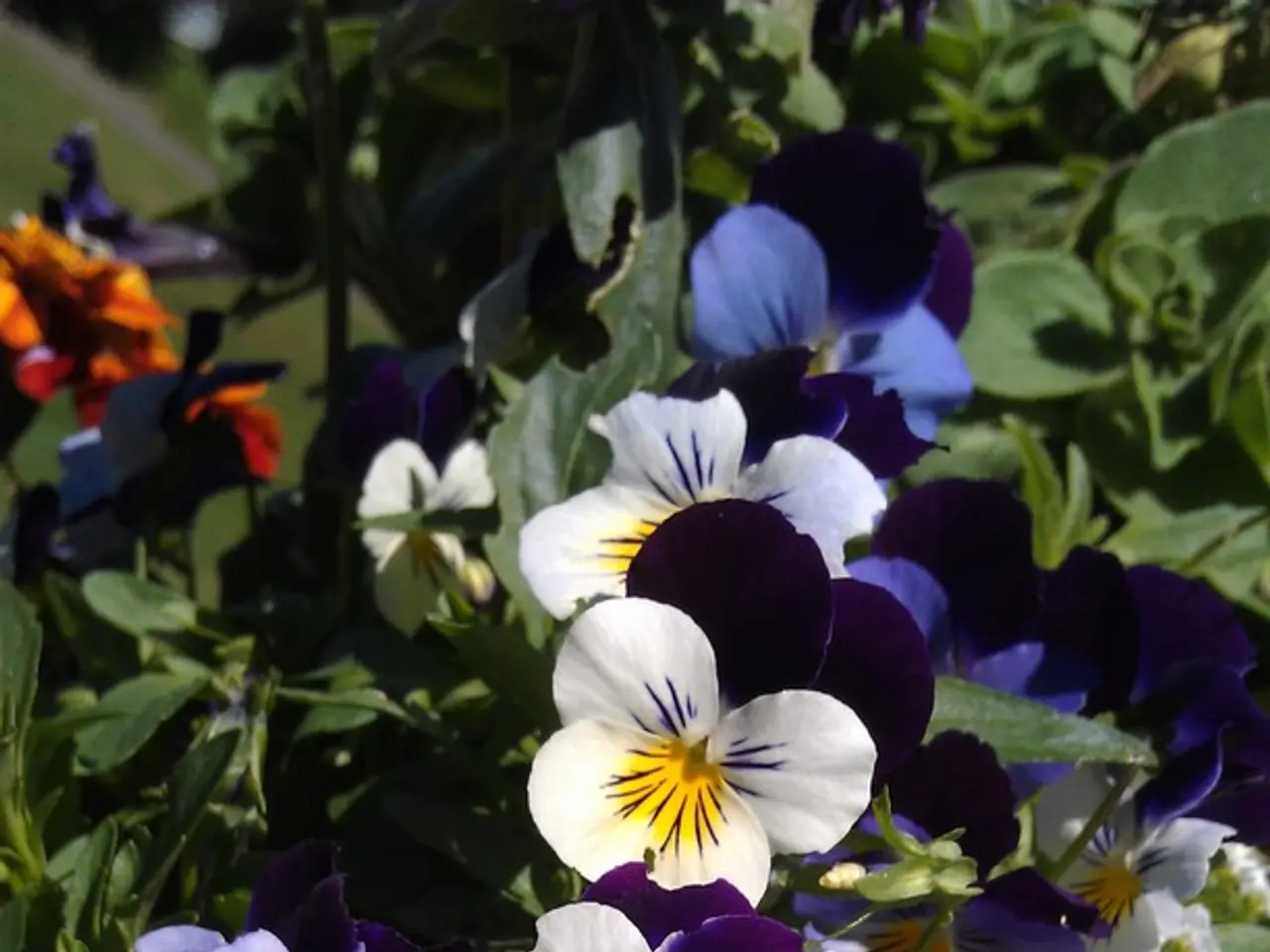Twelve Effortless Native Blooms Ideal for Your Flower Bed
Supporting Pollinators in Small Spaces: A Guide to Native Wildflowers
For those with limited garden space, creating a pollinator-friendly habitat is still achievable. Here are some native wildflowers that thrive in small patio gardens, providing abundant nectar and pollen for a variety of pollinators.
Culver’s Root (Veronicastrum virginicum) is a native perennial with tall, elegant spikes of small white to pale lavender flowers blooming mid to late summer. It attracts native bumblebees and beneficial flies, providing nectar during a critical mid-summer period.
Sweet Alyssum (Lobularia maritima) is a low-growing annual that blooms from spring through fall with tiny white, pink, or purple flowers. Its compact size is ideal for small spaces or container gardens, supporting smaller pollinators such as native bees, hoverflies, and wasps, which are essential for pest control and plant reproduction.
Black-eyed Susan (Rudbeckia) is a native wildflower rich in nectar and pollen, attractive to bumblebees, honey bees, butterflies, and hummingbirds. Its size and bright flowers suit a patio garden and offer a good visual cue for pollinators.
Coreopsis is another daisy-like wildflower, featuring bright yellow flowers that are attractive to bees, butterflies, and hummingbirds. It is suitable for sunny areas and containers, adding vibrant color and supporting pollinators.
Other options for native pollinator support in small spaces include Perennial Salvia, which is drought-tolerant and deer-resistant and also draws bees and hummingbirds.
For a continuous supply of nectar, consider plants with manageable height and bloom duration. Sweet Alyssum's long blooming and compact form make it especially suited for confined spaces. Combining several of these native wildflowers can create an effective, wildlife-supporting pollinator habitat.
For those seeking more native options tailored to their specific region or zone, consulting local native plant nurseries or resources like Xerces Society pollinator plant lists can be very helpful.
Some additional native wildflowers to consider include:
- Butterfly Weed (Asclepias tuberosa), which thrives in full sun and dry to medium, well-drained soil, growing one to three feet tall and freely self-sowing. It produces striking orange flower clusters throughout the summer, attracting butterflies.
- Compass Plant (Silphium laciniatum), which blooms prolifically in summer with sunny yellow, sunflower-like flowers, growing best in zones 3-8.
- White Turtlehead (Chelone glabra), which has dense spikes of white, two-lipped flowers resembling a turtle head, thriving in moist to wet, organically rich soil and full sun to partial shade, best in zones 3-8.
- Plains Coreopsis (Coreopsis tinctoria), featuring long-lasting, bicolor blooms with notched petals, growing just about anywhere in zones 2-11, preferring light, well-drained soil in full sun.
- Large-flowered beardtongle (Penstemon grandiflorus), which blooms purple flowers in late spring and early summer, growing in zones 3-9, tolerating poor soil, dry conditions, and full sun to part shade.
- Butterfly Weed (Asclepias tuberosa), which grows in zones 3-9, thriving in full sun and dry to medium, well-drained soil, producing striking orange flower clusters throughout the summer.
- Large-flowered beardtongle (Penstemon grandiflorus) also grows in zones 3-9, thriving in poor soil, dry conditions, and full sun to part shade.
- Compass plant (Silphium laciniatum) blooms prolifically in summer with sunny yellow, sunflower-like flowers, growing in zones 3-8.
- White Turtlehead grows best in zones 3-8, thriving in moist to wet, organically rich soil and full sun to partial shade.
- In compact garden spaces, growing native wildflowers like Culver’s Root, Sweet Alyssum, Black-eyed Susan, Coreopsis, Perennial Salvia, Butterfly Weed, Compass Plant, White Turtlehead, Plains Coreopsis, and Large-flowered beardtongle can offer abundant nectar and pollen for various pollinators, making it a pollinator-friendly habitat.
- For those who prefer native wildflowers that thrive in small patio gardens, plants such as Sweet Alyssum are ideal due to their compact size and long blooming period, which supports smaller pollinators such as native bees, hoverflies, and wasps.
- To create an effective wildlife-supporting pollinator habitat, consider plants with manageable height and bloom duration, such as Sweet Alyssum, and combine several native wildflowers to attract a variety of pollinators.
- For those seeking more native options tailored to their specific region or zone, consulting local native plant nurseries or resources like Xerces Society pollinator plant lists can provide helpful information on suitable wildflowers.
- Plants like Coreopsis, featuring bright yellow flowers, are suitable for sunny areas and containers, adding vibrant color and supporting pollinators like bees, butterflies, and hummingbirds.
- Some native wildflowers, such as Large-flowered beardtongle and Butterfly Weed, grow in various zones and tolerate poor soil, dry conditions, and full sun to part shade, making them excellent options for home-and-garden enthusiasts who want to incorporate organic, sustainable gardening practices into their lifestyle.




